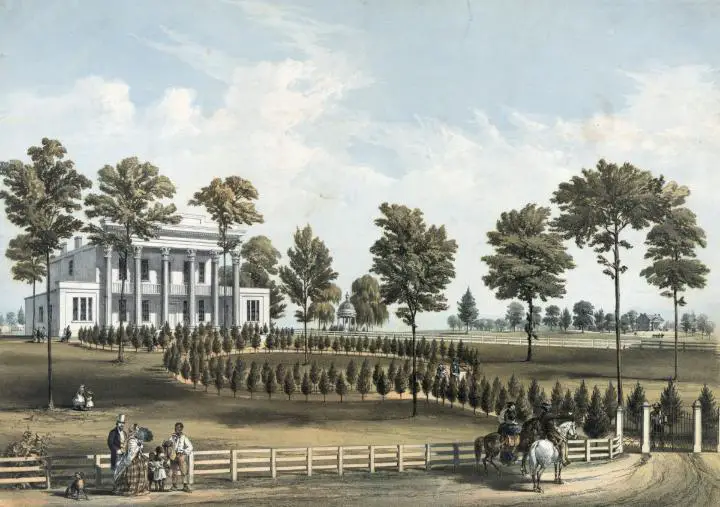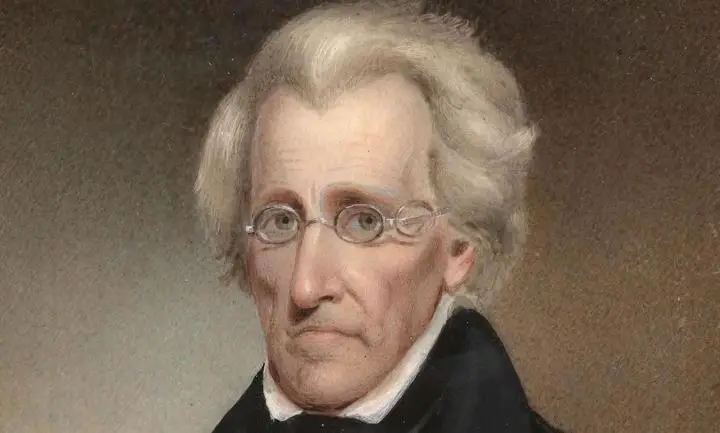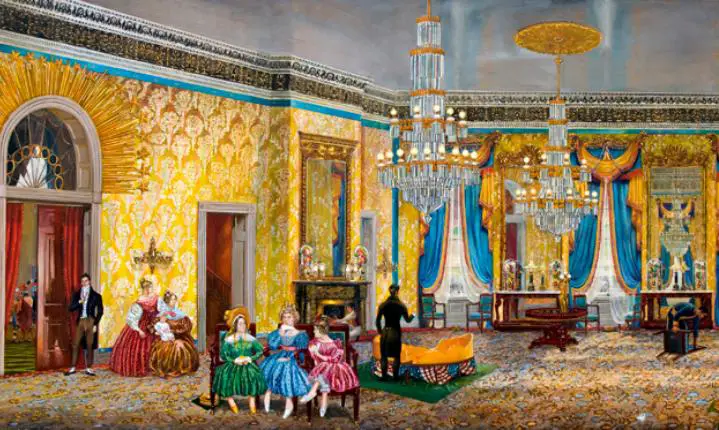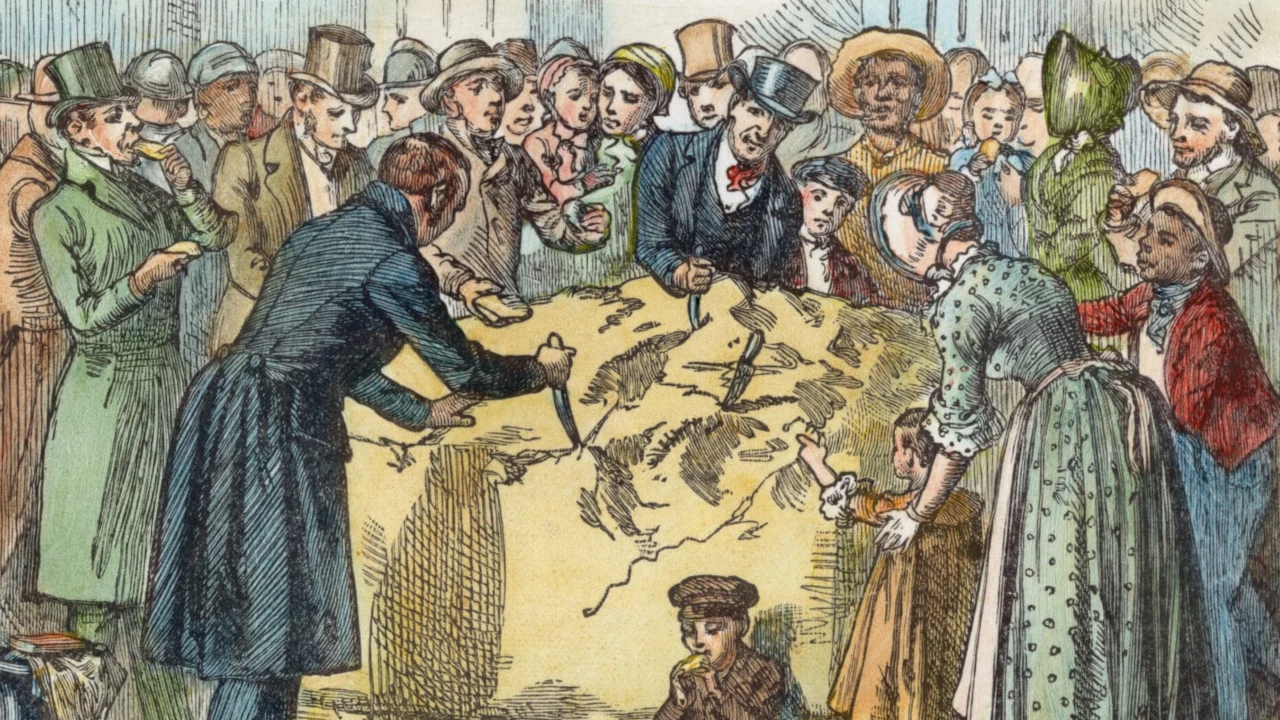Despite a humble beginning, Andrew Jackson grew to become a legend. Born in the backwoods of South Carolina, he attended school only sporadically as a boy. By the age of 14, he had been predeceased by both of his parents and his brothers and fought in the American Revolutionary War (during which time he contracted, and survived, smallpox). He was known for his fiery temper and propensity for fighting.
Still, he managed to pull himself up by the bootstraps to become a wealthy lawyer, celebrated general, influential politician and, eventually, President of the United States of America. And, at some point, he was gifted a really, really big wheel of cheese.
Andrew Jackson's early life
Andrew Jackson was born on March 15, 1767, in the Waxhaws region of the Carolinas. The exact location of his birth is unknown, and both states have claimed him as a native son, though he always said he was from South Carolina. The son of Irish immigrants, his father died before he was born, and his mother and both of his brothers died during the American Revolution. As a result, Jackson would hold a life-long grudge against the British.
Career and political achievements
Despite very little formal education as a child, Jackson started reading law books as a teenager and, in 1787, earned admission to the North Carolina bar. He soon moved to the region that would become Tennessee and began working as a prosecuting attorney. Later, he opened a private practice.
Jackson did quite well in his business and earned enough to build a mansion, the Hermitage (still standing in Nashville today), and to buy slaves. In 1796, he became the first man elected to the U.S. House of Representatives from Tennessee and was later elected to Senate in 1797. Only a year later, he was elected judge of Tennessee's superior county and later chosen to head the state's militia.

During the War of 1812, he held the role of general and twice led the Americans to victory. Later, he ordered an invasion of Florida and, defeating the Spanish, claimed the land for the United States. Though his actions were controversial, they ultimately sped up the U.S. acquisition of the land.
Due to his popularity, many suggested that he run for president. Though he initially protested, supporters managed to get him a nomination. In a five-way race, Jackson neatly won the popular vote, but no candidate received the majority of electoral votes. The House of Representatives was charged with deciding between the three leading candidates: Jackson, John Quincy Adams and Secretary of the Treasury William H. Crawford. Adams won.
President Andrew Jackson
Four years later, Andrew Jackson won the election, despite an unusually large number of personal attacks. He was the first president not from Massachusetts or Virginia, and people either loved him or hated him–there was no middle ground.
The newly minted president made it clear that he was in charge, and almost immediately he made a decision that would mar his reputation for centuries to come: he suggested moving Native American tribes in the United States to the west of the Mississippi. The forced removal wasn't completed until two years after he left office, but the great loss of life is largely attributed to his ignoring the corrupt actions of government officials.
On the upside, Jackson's penny-pinching ways, along with increased revenue, enabled him to pay off the national debt in 1835 and keep the nation debt free for the remainder of his term. This is the only time in the history of the United States that the federal government was debt free.

Later, to the chagrin of many, Jackson vetoed the recharter of the Bank of the United States (who was aligned with the opposing party). Despite the unpopularity of this move, he easily won reelection with more than 56 percent of the popular vote.
The big block of cheese
On New Year's Day 1836, Andrew Jackson received a giant block of cheese. It wasn't as much a gift as it was a testament to the great state of New York.
Dairy farmer Colonel Thomas S. Meacham of Sandy Creek, NY, came up with the idea in 1835. He believed that creating a gargantuan wheel of cheese from all the local cows, and then shipping it to the president, would help prove New York's success as a center of farming and industry. Though his efforts were perhaps misguided, he certainly did garner a lot of attention.
According to legend, the finished product was a wheel of cheddar four feet in diameter, two feet thick, and nearly 1400 pounds. It was wrapped in a giant belt that, according to a story in the New Hampshire Sentinel, presented a "fine bust of the President, surrounded by a chain of twenty-four States united and linked together."
After touring the northeast, the cheese was loaded onto a schooner and set sail for Washington D.C. It was accompanied by five other giant cheeses (though only about half the size) intended for Vice President Martin Van Buren, William Marcy, Daniel Webster, the U.S. Congress, and the legislature of the State of New York.
Upon its arrival at Pennsylvania Avenue, the president simply did not know what to do with it. He gave away as much as he could, and undoubtedly ate his own fair share, but by all accounts, it was left to age sitting on a floor in the middle of the White House.
A giant cheese party
What do you do when you have more cheese than you can possibly eat on your own? You throw a party. And that's exactly what Andrew Jackson did.
Nearing the end of his second term, the president decided that he didn't really want to pack up a giant cheese and take it with him. Instead, he would make the two-year-old pile of cheese the center point of his last public reception.

10,000 visitors showed up and devoured the stinky wheel in under two hours. According to Benjamin Perley Poore in his 1886 book Perley's Reminiscences of Sixty Years in the National Metropolis, "For hours did a crowd of men, women and boys hack at the cheese, many taking large hunks of it away with them. When they commenced, the cheese weighed one thousand four hundred pounds, and only a small piece was saved for the President's use. The air was redolent with cheese, the carpet was slippery with cheese, and nothing else was talked about at Washington that day."
Unfortunately, even though the cheese was gone, its odor was not. Jackson's successor, Martin Van Buren, reportedly had to air out the carpet, remove the curtains, and paint and white-wash the walls in the room where the cheese had resided.
 Ape Out Shirt $21.68 |
 |
 Ape Out Shirt $21.68 |

